"But whether there be a God and whatever be His nature; whether we have an immortal soul or not, or whatever may be our state after death, I can have no fear of having to suffer for the study of nature and the search for truth, or believe that those will be better off in a future state who have lived in the belief of doctrines inculcated from childhood, and which are to them rather a matter of blind faith than intelligent conviction."
Alfred Russel Wallace
In a letter to his brother.
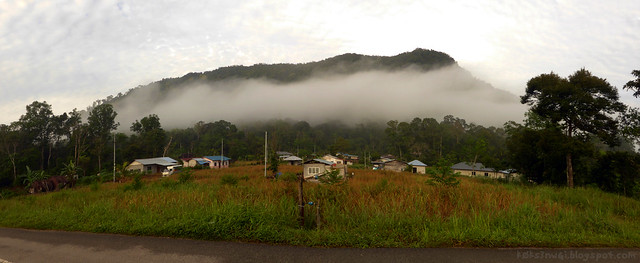 |
| Panorama of mist-shawled Bukit Serumbu from Kampung Peninjau. |
I first heard about "Wallace Trail" from Ashraf who accompanied me on my hike up Mount Santubong earlier this year on the 31st of January and I had been intrigued by it ever since. A bit of Google-fu revealed to me that it lays on an elevated piece of real estate 446 to 488 metres high (depending on what source you use) that is called Bukit Serumbu, Bung Muan or Peninjau (depending on who you ask). It consists of a single massive lump of porphyry diorite rock with very little old growth forest covering it as it had been a site of habitation for the local Bidayuh since time immemorial. Knowing of its existence, of course, meant that I must climb it.
I started my hike at about 8:00 in the morning (13th of April) from its starting point in Kampung Peninjau armed with some energy bars, two large bottles of fluids and a simple diagram of the trail which I photographed at the front of the Visitors' Info Centre.
 |
| They don't seem to be able to decide on whether to call it a Visitors Info Centre or a Tourist Info Centre. |
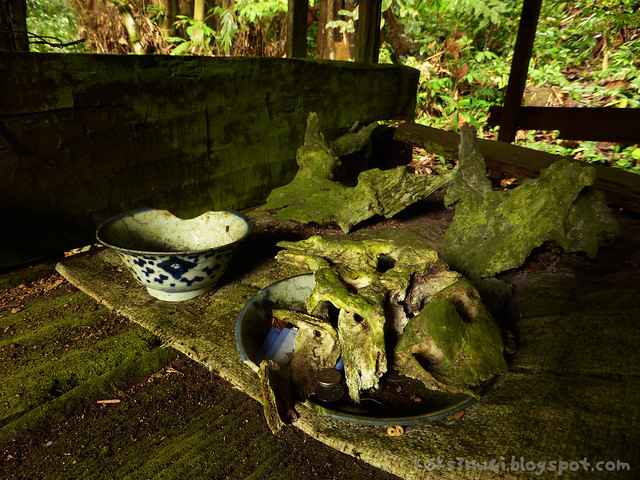 |
| The Bori Guna or "Skull Hut" is the first landmark you'll encounter. It appears to be some sort of local shrine. |
The hazards of venturing into the wilderness at so early an hour included stepping stones along the trail that are still slippery with dew and pesky mosquitoes, but I enjoy taking a walk in a jungle when the cold of the previous night still lingers before it gets replaced by the malarial heat of Borneo. The trail was not very clearly marked, but someone seemed to have dropped pieces of scrap paper along it to mark their ascent - so followed the paper trail I did. Large boulders littered the path up, lots of them featuring uncannily smooth cracks and splits. One of these cleft rocks, the batu tikopog, is actually a feature of the trail.
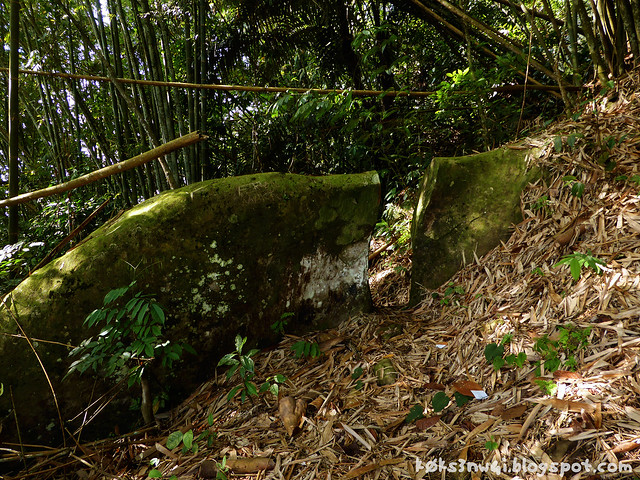 |
| Yeap, you are suppose to walk through the cleft. And you can see some of the paper scraps marking the trail in this picture. |
 |
| The view at batu tikopog. Note the altocumulus clouds in the sky. |
In The Malay Archipelago (1869) by Alfred Russel Wallace, in his account of his time spent here at Bukit Serumbu, he wrote about dem rocks too,
"Huge boulders, as big as the houses themselves, rise among them, and hang over them in the most extraordinary manner. Every one is a picturesque object stained with lichens, and on the shady side covered with mosses, while the tops are generally more are less clothed with curious ferns and orchids."
The natural second leg of the trek after batu tikopog takes you through a gently-inclined walk through some bamboo grooves and it had to be the most pleasant part of the climb. Dry, rustly bamboo leaves carpeted the ground while rays of sunlight streamed in from between the bamboo trunks (or "stalks", since some Grammar/Botany Nazis will argue that bamboos are phylogenetically grass).
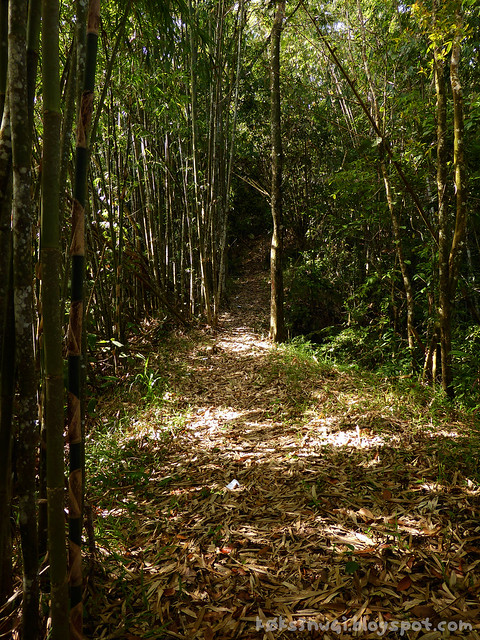 |
| Through the bamboo groves. |
Anyway, it would be amiss of me to not feature some of the faunae I encountered on my retracing of a famous naturalist's footsteps here on Serumbu. Here they are,
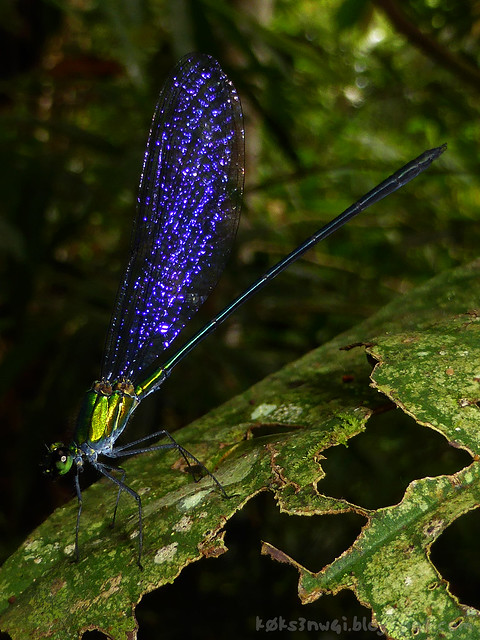 |
| A frequently seen Vestalis sp. with and emerald body and shimmery blue wings. Without a good, hard look at its anal appendages, I can't pinpoint the species. |
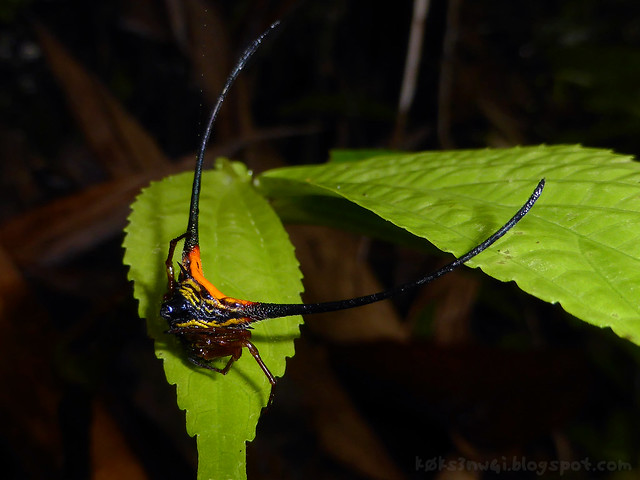 |
| The horny ass of an orange, yellow and black curved spiny spider (Gasteracantha arcuata). |
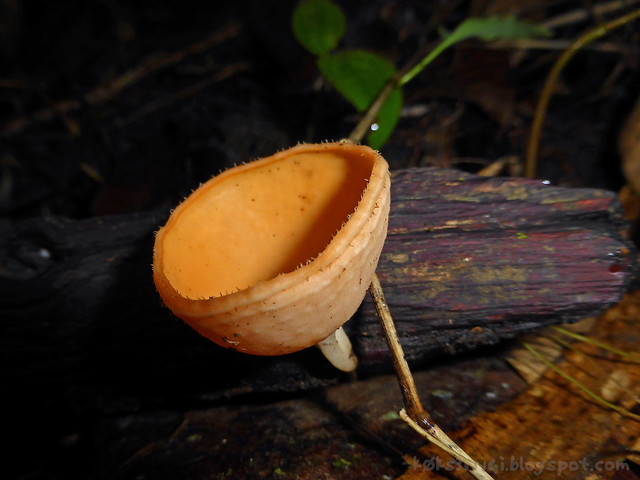 |
| A cup-shaped Cookeina sp. mushroom from the Sarcoscyphaceae family of cup fungi. |
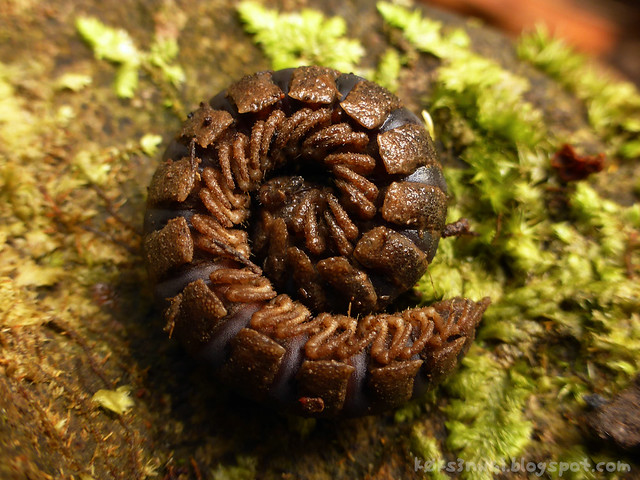 |
| A curled up polydesmid millipede. |
 |
| Another millipede from the polydesmida order. This one was just taking a stroll through the leaf litter. |
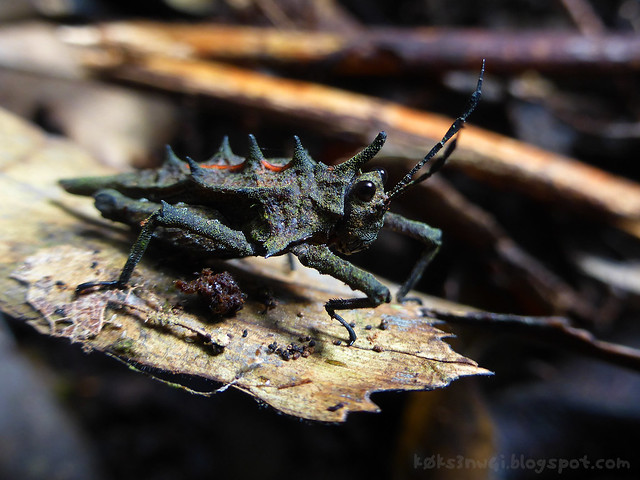 |
| A unidentified grey-green spiny grasshopper with an orange streak on its back. |
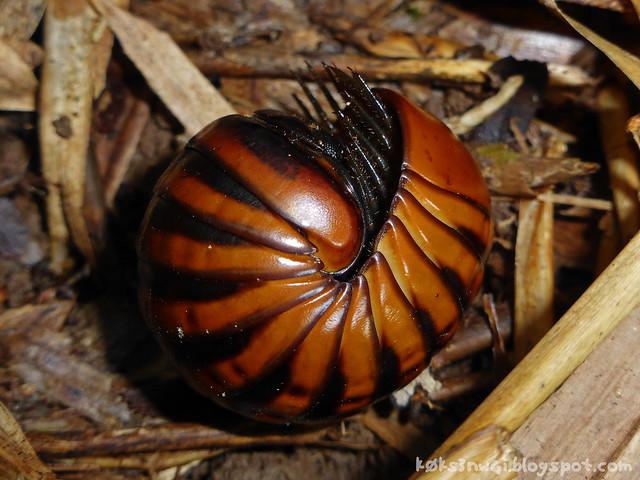 |
| A Bothrobelum rugosum curled up in a defensive position like an armadillo. |
 |
| The B. rugosum is a pill millipede, of course. |
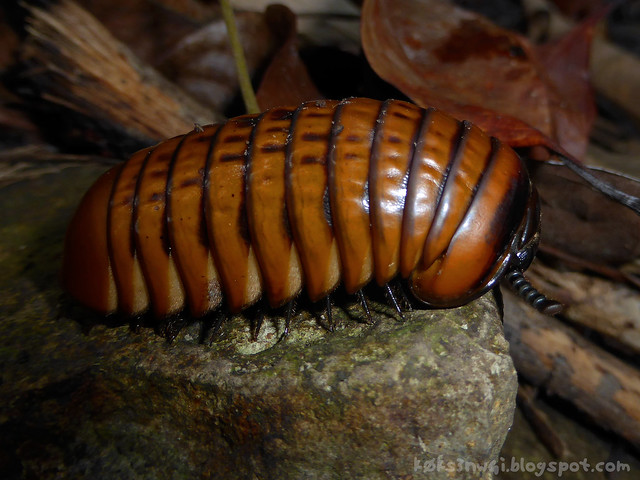 |
| I have discussed about how one can distinguish pill millipedes from pill bugs in my post about climbing Mount Penrissen. |
 |
| This B. rugosum is the same one in the previous picture. |
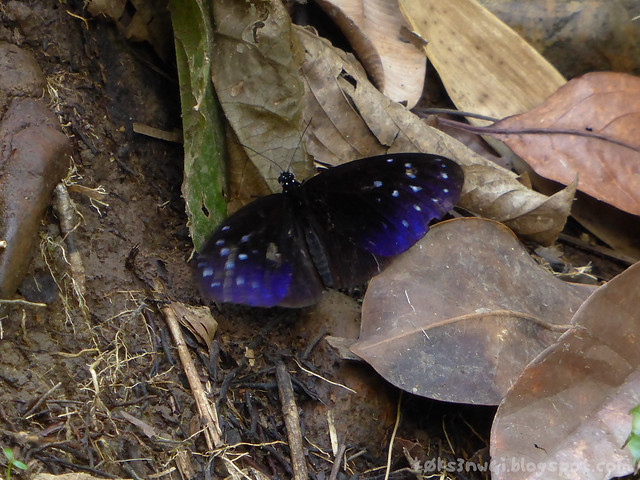 |
| A rather battered looking male Striped Blue Crow (Euploea mulciber) on the ground. |
 |
| A Straight-banded Fivering or Malayan Six Ring (Ypthima fasciata torone) perched on some greenery. |
 |
| A pretty scratched-up Horsfield's Baron (Tanaecia iapis) basking on a leaf. |
The Rajah Cave or Ngiroyan Raja - which is more of a massive overhanging boulder than an actual cave - marks a sort of halfway point on the trail and it looks to be a frequently used camp site with bamboo pallets built beneath its shade.
 |
| The Rajah Cave. |
Right round a corner, the villagers have installed a couple of dirt basic privies complete with porcelain squat toilets planted right onto the ground. I did not try them out but I strongly suspect that there were no actual plumbing attached.
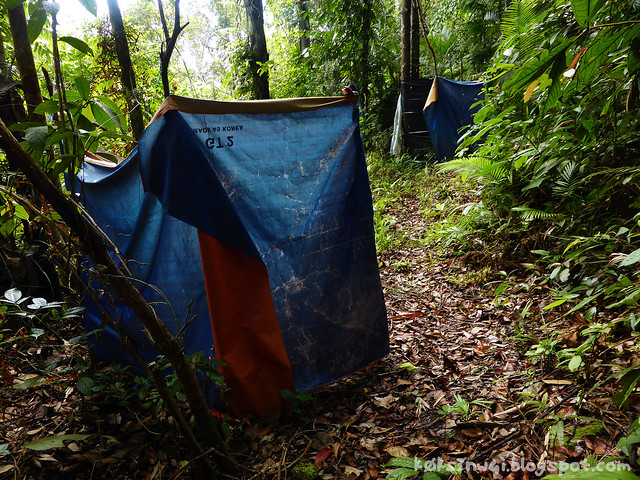 |
| A pair of privies. A couple of commodes. A twin of toilets. |
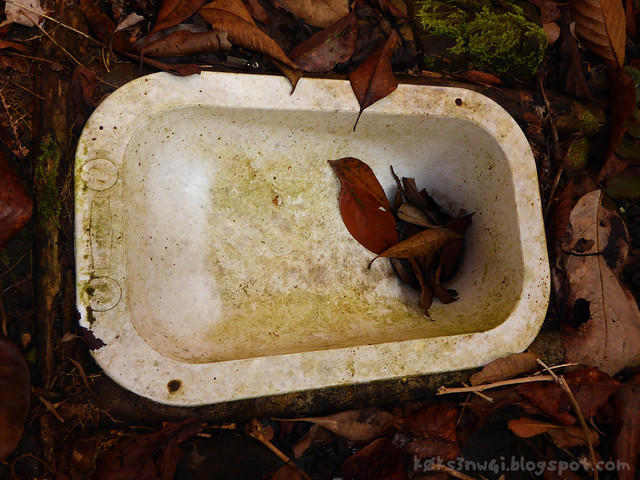 |
| Looks like the last bloke who went here had trouble digesting cellulose. |
Almost immediately after that, the incline rose to a steeper 30 to 40° rope-assisted trudge, and I found myself missing my gloves which I left in my car at the base of the mountain. It was no more than a warm-up compared to what Mount Santubong has to offer, but it definitely topped Mount Serapi for a workout.
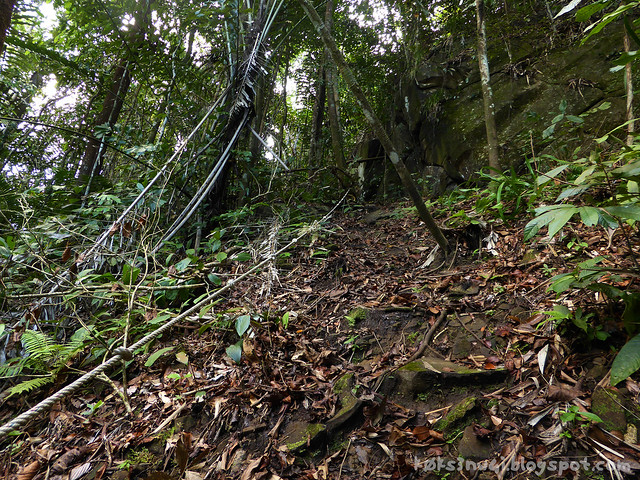 |
| The trail after Rajah Cave. |
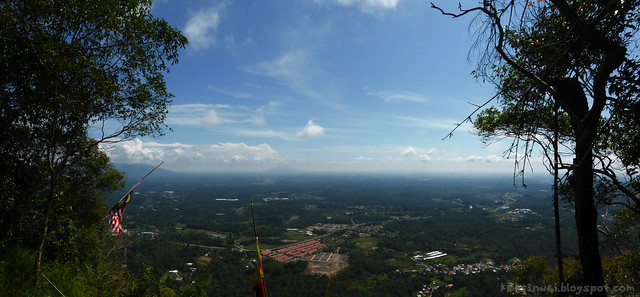 |
| A lookout point a short while before the top. Click to enlarge. |
At about 11:00AM, I arrived at the well-shaded top ridge of Serumbu where I saw my very first wild pitcher plant in all my time in Borneo (though I would see millions more in my later trip to Bako National Park, but that's another post for another day). Maybe I haven't been observant or gone out enough, but I am a tad embarrassed by this gaping hole in my Bornean experience, having lived in Sarawak for two and a half years by now.
 |
| A nest of Nepenthes ampullaria upper pitchers dangling from its climbing stems. |
Pitcher plants are known to produce two types of pitchers - the lower and the upper pitchers - and apparently, the upper pitchers of the ampullaria are said to be extremely rare and had only been seen a few time. It was thought that they only produce them when they are placed under great environmental duress, so it was quite a cool sight. All the other pitchers I encountered after this were lower ones.
Nepenthes ampullaria is also quite morphologically distinct being urceolate or urn-shaped in appearance, so it is difficult to confuse with another member of the Nepenthes genus. Also, unlike other pitcher plants which have a stronger commitment to carnivory, ampullaria's diet consists of whatever it is that falls into its pots - dead leaves, faeces, the occasional animal, et cetera. You can see that in its reduced and reflexed lid that leave the pitcher's opening wide open. Their lids also have far reduced numbers of nectar glands (sometimes absent completely) which in other Nepenthes species play a crucial role in baiting insects.
Of course, they are by no means picky and insects do still fall in from time to time.
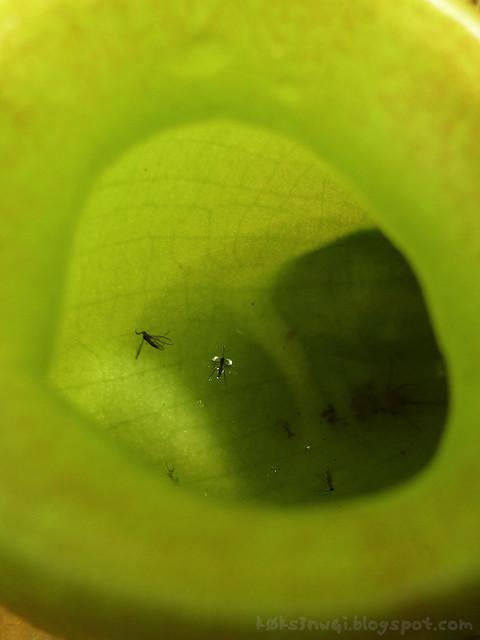 |
| Dead mosquitoes inside a N. ampullaria's lower pitcher. |
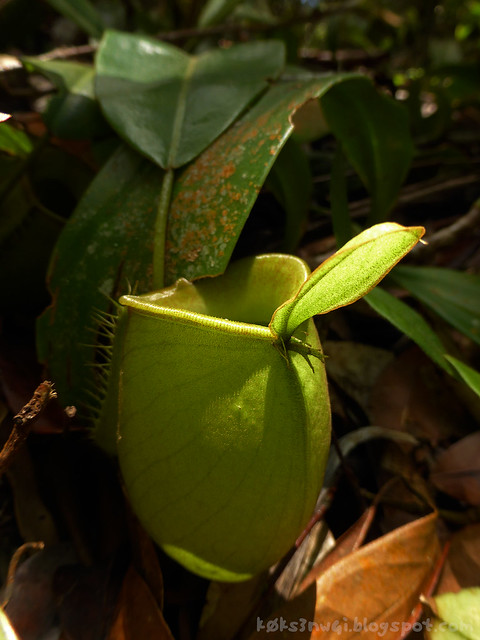 |
| A single lower pitcher of N. ampullaria. |
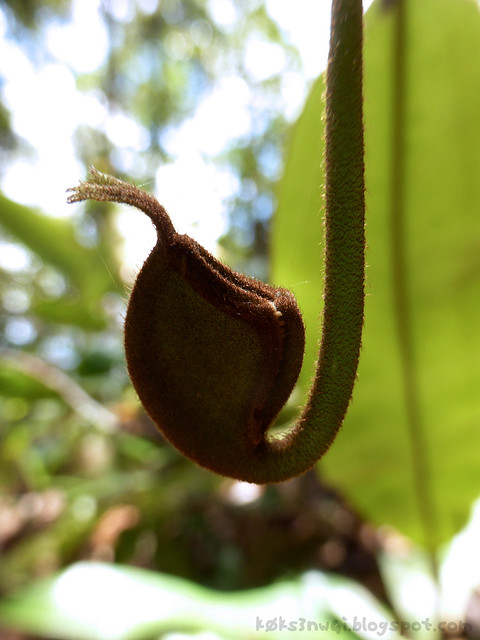 |
| A developing N. ampullaria lower pitcher. |
Aside from the abundance of N. ampullaria pitchers, the path of the summit ridge was also practically covered every inch of the way by spider webs built by innumerable, tiny spiders so arachnophobes should stay the hell away from this place. Every step I took destroyed several of the tiny silken traps the spiders painstakingly wove onto the ground.
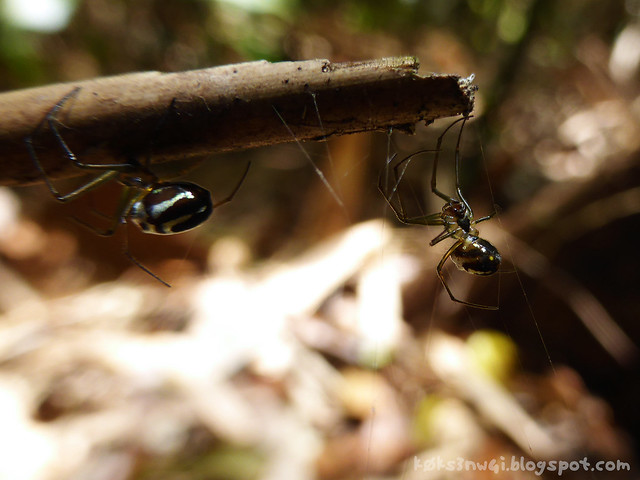 |
| Two unidentified spiders with metallic markings scurrying away from my huge, destructive feet. |
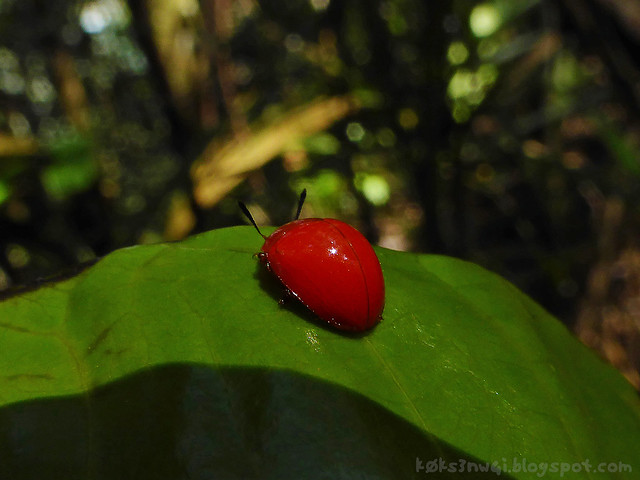 |
| An unidentified tiny, shiny scarlet bug seen at the top of Mount Serumbu. |
It wasn't long until I arrived at the base of an oblong boulder aimed at the sky over a precipitous cliffside on the southwest side of the mountain. The path sort of ended here, so I assumed that this must be the summit of Serumbu (though the lack of obvious signage left me with some doubt). Against my better judgment, I crawled up that huge stone to get a better view.
 |
| The boulder at the end of the trail. |
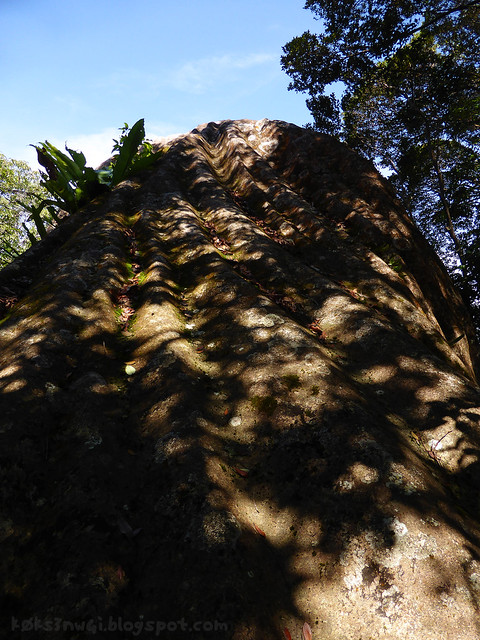 |
| The groovy surface of the boulder. |
 |
| The southwestern view from the maybe-summit of Bukit Serumbu. |
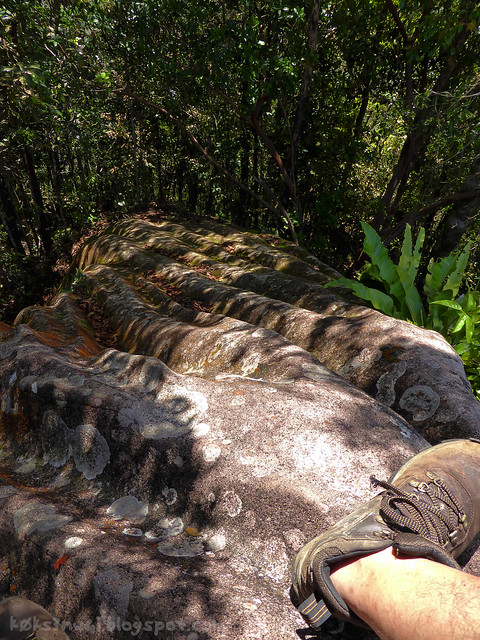 |
| Climbing down is the hard part. |
When I had enough of pretending to be Simba posing atop of my mini Pride Rock, I started scaling down from the monolith - noticing that the base of it also teeters at the edge of another drop. Should I slip on the descent, I would be riding on a one way train to Deadtown or Cripplesville. It didn't look like a place where my corpse would be discovered any time soon either.
Anyway, I evidently got down with my viscera still enclosed within my flabby corporeal self, more or less, or I wouldn't be blogging about this now.
After a quick lunch of some energy bars I packed with me on this outing, I began my leisurely walk down Bukit Serumbu. I was in no real hurry to go anywhere and I still have quite a lot of juice left in my camera's battery.
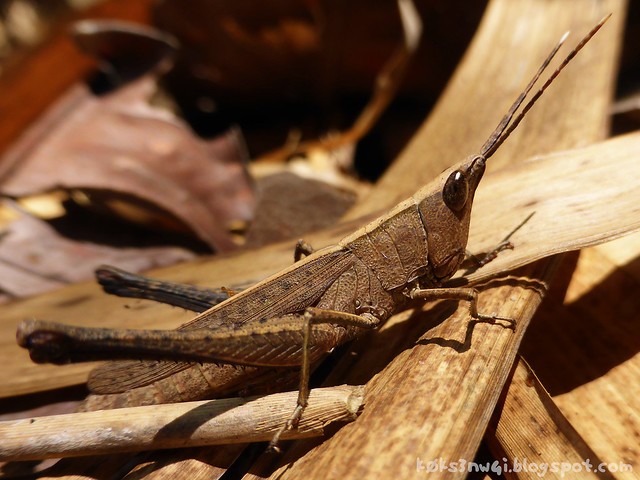 |
| A brown grasshopper camouflaged against the dead bamboo leaf litter by the site of Brooke's Cottage (more on that in my next post) |
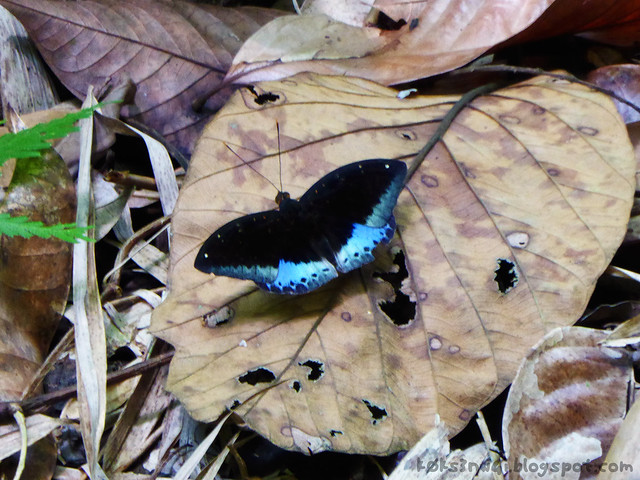 |
| A male Common Archduke (Lexias pardalis borneensis) resting on the forest floor. |
 |
| The plainer and browner spotty female counterpart of the L. pardalis. |
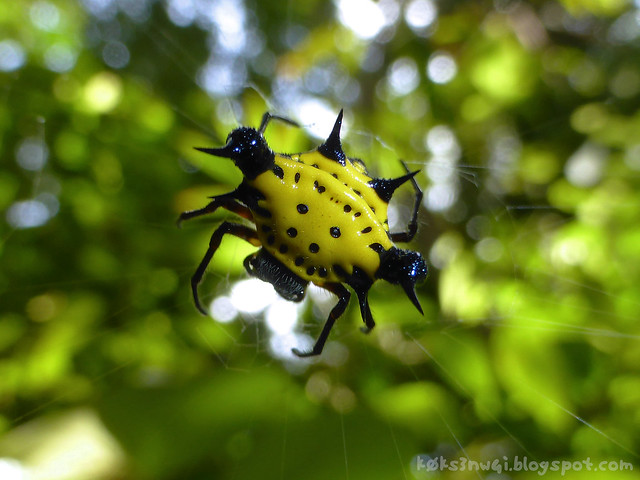 |
| A spiny orb-weaver that looks very much like Hasselt's spiny spider (Gasteracantha hasselti). |
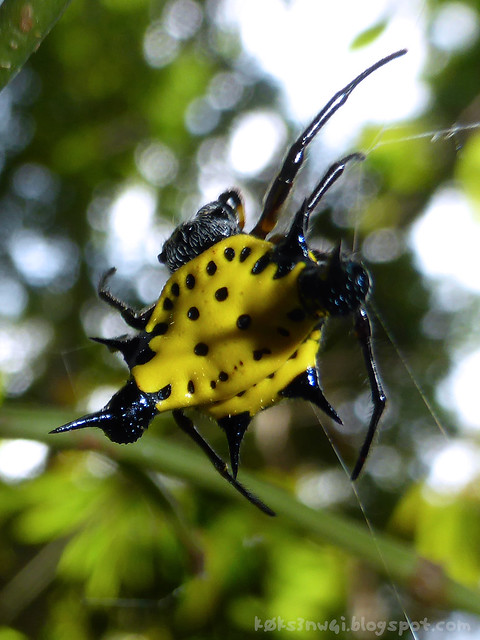 |
| A close-up of the same G. hasselti. |
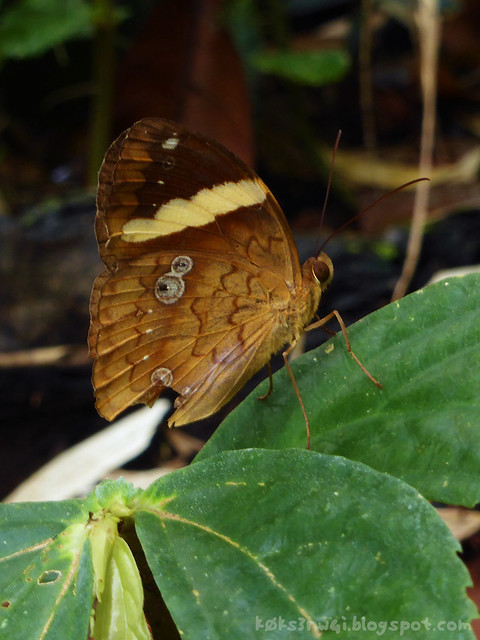 |
| A less-than-pristine specimen of Xanthotaenia busiris or Yellow-banded Nymph. Probably the Bornean burra subspecies. |
About halfway down, I was treated to a familiar cacophony that I encountered previously at the Kubah National Park - the ear-splitting tymbalisation of jade-green cicadas (Dundubia vaginata). Like previously, they reached a crescendo at about 1:00PM but tried as I could, I was unable to approach one closely enough to photograph it. Of course, at the time I am writing this, I have already remedied that deficiency twice over: once on a repeat climb of Santubong and more recently, during my one week at the Mulu National Park. I will tell more in my forthcoming posts about those expeditions.
Even at my unhurried pace, I reached the base of the mountain after just two hours, and that includes the time I took poking around the historical site where the Brooke Cottage once stood. As with my trek up the mountain, I did not meet a single other trekker on my way down, which suits me just fine. I don't like people very much. As my past history with meeting people on mountain trails can attest, they tended to do stunningly selfish and inconsiderate things like smoke cigarettes in my presence without even asking me if I am okay with it. Did they think that I wasn't trekking for my own health? Or that I have no inclinations in enjoying the clean mountain air which I spend hours trying to access?
Still, I hope that the flow of pilgrims coming to Bukit Serumbu to retrace Wallace's steps would remain a trickle. It isn't everyday that one can claim an entire mountain of solitude for himself, you know.
RELATED POST: The Mismanagement of Alfred Russel Wallace's Heritage in Sarawak
Treading on natural history,
k0k s3n w4i

No comments:
Post a Comment